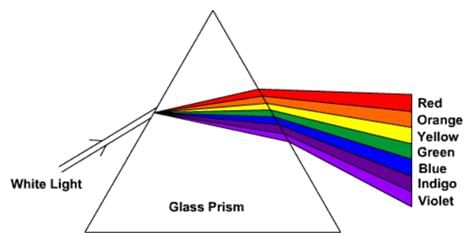Class 10 Exam > Class 10 Tests > Science Olympiad Test: Human Eye and Colorful World- 1 - Class 10 MCQ
Science Olympiad Test: Human Eye and Colorful World- 1 - Class 10 MCQ
Test Description
10 Questions MCQ Test - Science Olympiad Test: Human Eye and Colorful World- 1
Science Olympiad Test: Human Eye and Colorful World- 1 for Class 10 2025 is part of Class 10 preparation. The Science Olympiad Test: Human Eye and Colorful World- 1 questions and answers have been prepared
according to the Class 10 exam syllabus.The Science Olympiad Test: Human Eye and Colorful World- 1 MCQs are made for Class 10 2025 Exam.
Find important definitions, questions, notes, meanings, examples, exercises, MCQs and online tests for Science Olympiad Test: Human Eye and Colorful World- 1 below.
Solutions of Science Olympiad Test: Human Eye and Colorful World- 1 questions in English are available as part of our course for Class 10 & Science Olympiad Test: Human Eye and Colorful World- 1 solutions in
Hindi for Class 10 course.
Download more important topics, notes, lectures and mock test series for Class 10 Exam by signing up for free. Attempt Science Olympiad Test: Human Eye and Colorful World- 1 | 10 questions in 10 minutes | Mock test for Class 10 preparation | Free important questions MCQ to study for Class 10 Exam | Download free PDF with solutions
Science Olympiad Test: Human Eye and Colorful World- 1 - Question 1
The far point of a myopic eye is at 50 cm. The power of the lens to correct his vision is
Detailed Solution for Science Olympiad Test: Human Eye and Colorful World- 1 - Question 1
Science Olympiad Test: Human Eye and Colorful World- 1 - Question 2
Human eye is more or less like a
Detailed Solution for Science Olympiad Test: Human Eye and Colorful World- 1 - Question 2
Science Olympiad Test: Human Eye and Colorful World- 1 - Question 3
The function of iris is to regulate the amount of light entering the eye by adjusting the size of
Detailed Solution for Science Olympiad Test: Human Eye and Colorful World- 1 - Question 3
Science Olympiad Test: Human Eye and Colorful World- 1 - Question 4
The splitting up of the light into its constituent colours, and the coloured bands so obtained on the screen are called
Detailed Solution for Science Olympiad Test: Human Eye and Colorful World- 1 - Question 4
Science Olympiad Test: Human Eye and Colorful World- 1 - Question 5
The property of eye which is used in cinematography is
Detailed Solution for Science Olympiad Test: Human Eye and Colorful World- 1 - Question 5
Science Olympiad Test: Human Eye and Colorful World- 1 - Question 6
The essential condition for Rayleigh’s elastic scattering is
Detailed Solution for Science Olympiad Test: Human Eye and Colorful World- 1 - Question 6
Science Olympiad Test: Human Eye and Colorful World- 1 - Question 7
The longest visible wavelength 800.0Å is of ______ colour
Detailed Solution for Science Olympiad Test: Human Eye and Colorful World- 1 - Question 7
Science Olympiad Test: Human Eye and Colorful World- 1 - Question 8
The cause of advanced sunrise and delayed sunset is
Detailed Solution for Science Olympiad Test: Human Eye and Colorful World- 1 - Question 8
Science Olympiad Test: Human Eye and Colorful World- 1 - Question 9
The intensity of scattered light (Is) varies inversely as the _______ power of wavelength (λ).
Detailed Solution for Science Olympiad Test: Human Eye and Colorful World- 1 - Question 9
Science Olympiad Test: Human Eye and Colorful World- 1 - Question 10
How many times does a ray of light bend on passing through prism?
Detailed Solution for Science Olympiad Test: Human Eye and Colorful World- 1 - Question 10
Information about Science Olympiad Test: Human Eye and Colorful World- 1 Page
In this test you can find the Exam questions for Science Olympiad Test: Human Eye and Colorful World- 1 solved & explained in the simplest way possible.
Besides giving Questions and answers for Science Olympiad Test: Human Eye and Colorful World- 1, EduRev gives you an ample number of Online tests for practice
Download as PDF
















